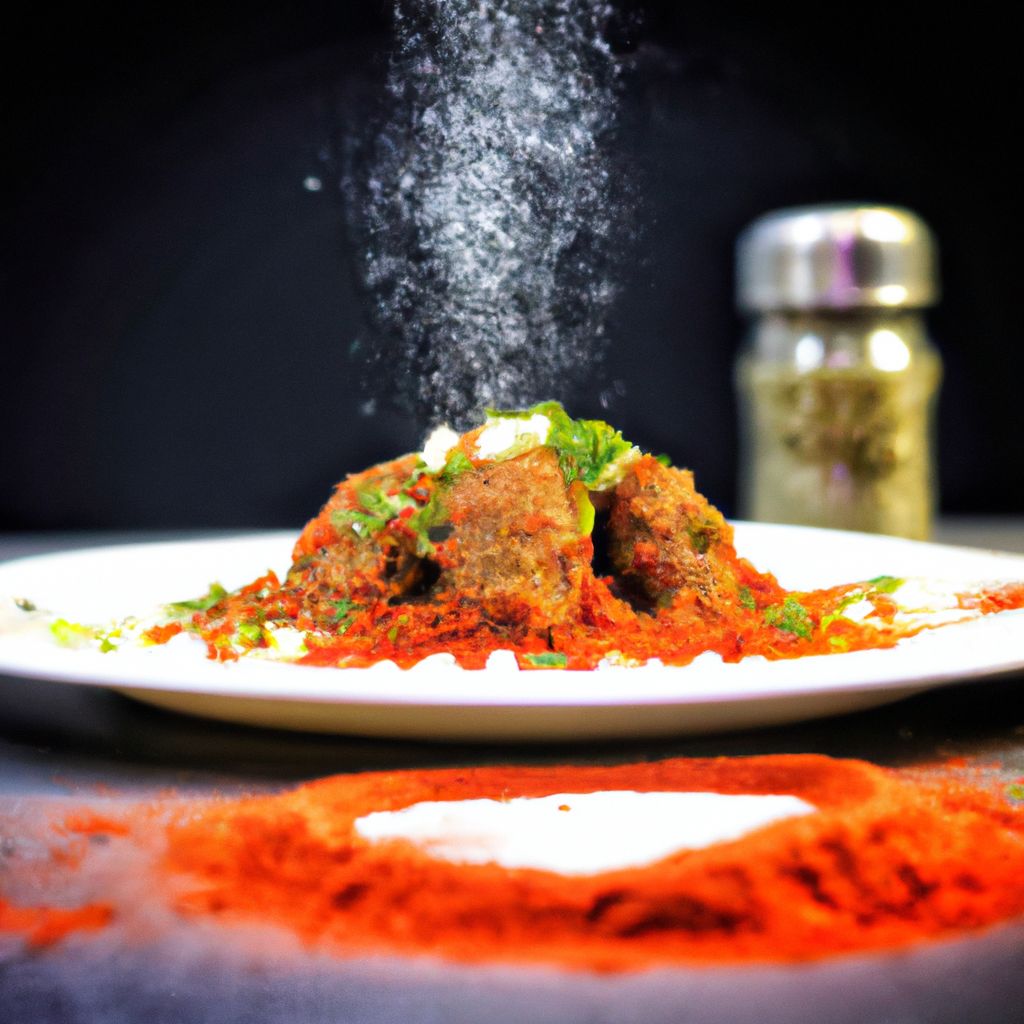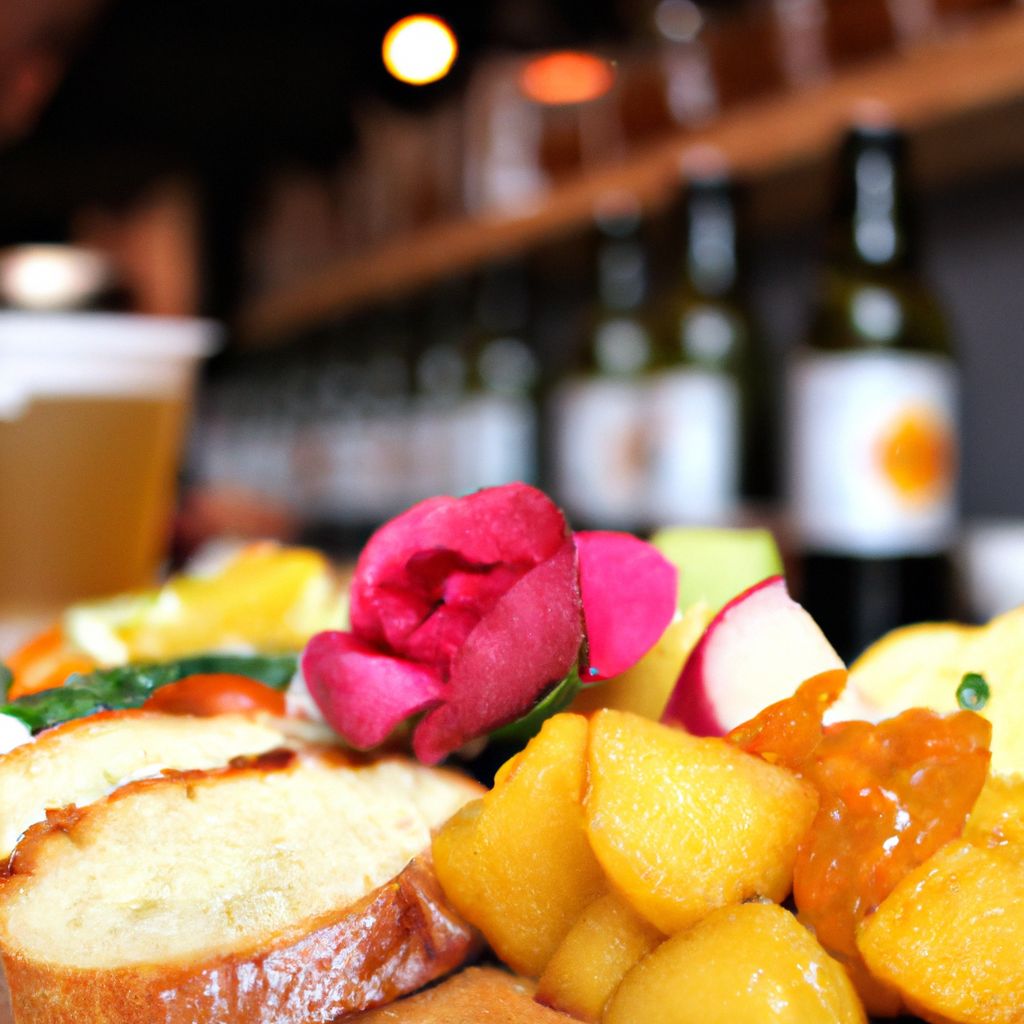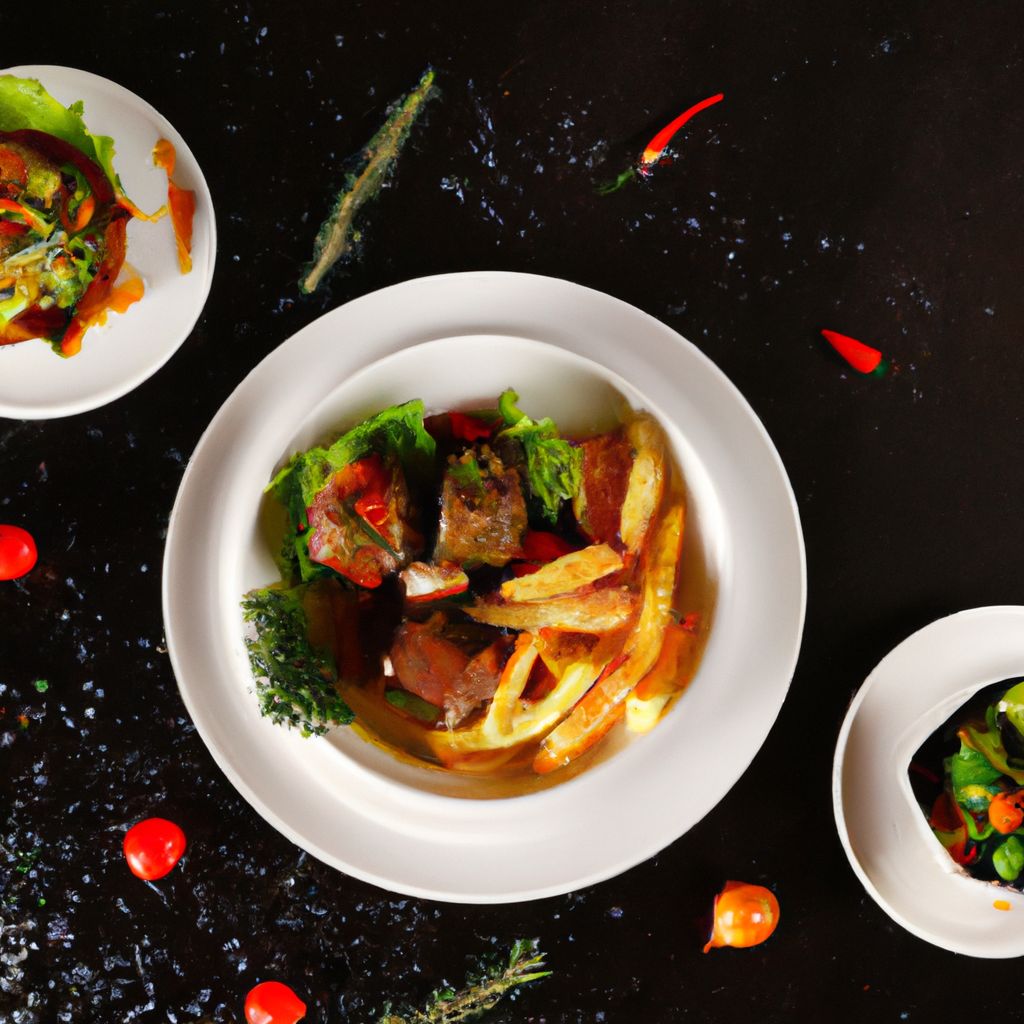.jpg)
.jpg)
Mastering the Art of Marketing for Restaurants!
Today’s competitive market requires effective marketing to succeed. It’s more than creating awareness – it’s strategically attracting customers, building loyalty, and standing out from the crowd. The right marketing techniques secure a customer base and keep restaurants thriving.
Start by defining a target audience. Understand who your customers are and what they want. Conduct market research to identify trends, preferences, and demographics that match your restaurant’s offerings. By meeting specific needs, you’ll draw in customers who return again and again.
Invest in a strong online presence. In this digital age, a great website and active social media are must-haves. Showcase your restaurant’s ambiance and dishes with captivating visuals and descriptions. Engage customers with regular updates, promotions, and prompt responses to inquiries and feedback. This boosts brand exposure and builds trust.
Collaborate with complementary businesses or influencers. Partner with local food bloggers or social media influencers to gain their audience and provide them with content. This mutually beneficial arrangement can reach potential customers interested in your culinary scene.
Implement targeted advertising. Use paid channels like Google Ads or social media ads to reach customers looking for dining options in your area. Customize campaigns based on location, interests, or online behavior to maximize click-throughs and conversions.
Finally, nurture positive reviews. Provide exceptional customer service. Happy customers are more likely to leave positive reviews and recommend your establishment. Offer incentives like discounts or exclusive offers for sharing experiences on popular review sites or referrals.
By mastering the art of effective marketing, restaurants can make lasting impressions, attract new customers, and build loyalty. Understand your target audience, establish a strong online presence, collaborate with influencers, use targeted advertising, and nurture positive reviews. Embrace these suggestions and watch your restaurant soar!
Understanding the Importance of Effective Marketing for Restaurants
Effective marketing is essential for restaurant success. It allows them to reach their target audience, create brand awareness and gain more customers. To make it work, restaurants must understand the target market; their preferences, demographics and behaviours. This can be done through targeted ads, social media engagement and personalized promotions.
Having an attractive web presence is also key. With technology, customers often research before deciding. So having a good website or app is important. Reviews and ratings are also influential.
Using social media platforms to engage with customers and show off unique offerings is important too. Share visually appealing images of dishes, respond quickly and promote events and specials.
For example, a small Italian restaurant had difficulty attracting customers. They revamped their website with professional food photography and content tailored to their target audience’s preferences. And they optimized their social media profiles with behind-the-scenes videos of their chefs’ expertise. As a result, they saw a big increase in reservations and positive reviews.
So remember, effective restaurant marketing involves understanding your target market, creating an appealing online presence and engaging via digital platforms. Strategically and creatively promote your restaurant’s unique offerings for long-term success in the hospitality industry.
Researching the Target Audience
Now, let’s dive into analyzing the target audience. Here’s a table that provides useful info:
| Demographic | Age Group | Gender | Income Level |
|---|---|---|---|
| Millennials | 18-34 | Male | $30,000-$60,000 |
| Families | 25-45 | Female | $40,000-$80,000 |
| Professionals | 25-55 | Male | $50,000-$100,000 |
| Seniors | 55+ | Female | $30,000-$50,000 |
This table helps restaurant owners understand who their customers are. It gives clues about age group, gender, and income level.
To learn more, surveys or feedback can give insights into customers’ eating habits and preferences. Monitoring online platforms and social media shows feedback about competitors’ restaurants. This helps find trends and patterns that match customers’ tastes and preferences.
After this research, here are some tips to better serve customers:
- Customize menu options – Offer dishes that fit different tastes and diets.
- Engage via social media – Share content on Instagram and Facebook. Respond to comments to build online presence.
- Collaborate with influencers – Work with local food bloggers and social media influencers who match your values. They can help spread the word.
These steps help speak directly to customers’ needs and preferences, creating satisfaction and building positive word-of-mouth. That’s how restaurants can achieve long-term success. And, don’t forget, marketing is about serving up great experiences – like trying to spell ‘bruschetta’!
Developing a Marketing Strategy
Developing a marketing plan for restaurants requires careful thought and creativity. Analyzing target consumers, distinguishing unique qualities, and creating powerful promotions is key. Understanding consumer behaviour and market trends will help restaurant owners build strategies that draw attention.
Defining the restaurant’s brand identity is the first step. This involves working out who the target audience is, what they like, and positioning the restaurant accordingly. Next, research competitors to discover gaps in the market that the restaurant can fill. Highlight unique features or offerings, such as farm-to-table ingredients or themed dining experiences, to set your restaurant apart.
Creating compelling promotions is the next step. Use various channels, such as social media, email marketing, and online advertising, to reach a larger crowd. Post content that shows off the restaurant’s ambience, menu items, or customer reviews to generate interest and draw people in.
Take Joe’s Burgers, for example. Joe noticed there weren’t enough dine-in customers during the weekdays. After researching his target audience – young professionals working nearby – he launched a lunchtime promotion for them. The “Burger Bonanza” ran from 12 pm to 2 pm and offered discounted burgers, free fries, and a drink upgrade. He advertised it through targeted Facebook ads and distributed flyers at local offices – and it worked!
Create marketing strategies that will make your competitors green with envy and your restaurant packed with happy customers!
Implementing the Marketing Tactics
Marketing tactics are essential for any restaurant’s success. Follow this 4-step guide to use them effectively:
- Figure out who your ideal customers are. Look at their demographics, preferences, and behavior. This will help you tailor your marketing to draw and engage them.
- Create a distinctive and appealing brand that shows your restaurant’s personality and values. Use constant branding across all marketing channels to gain recognition and loyalty from your target audience.
- Benefit from online marketing. Make a great website and optimize it for search engines. Connect with your customers through social media platforms, email marketing, and online ads to reach more people.
- Encourage repeat business. Give loyalty programs, special promotions, or personalized experiences. Get feedback from customers to improve your offerings and strengthen relationships.
Also, try the following:
- Collaborate with local influencers or bloggers to get your restaurant promoted.
- Give rewards for customers to refer friends or leave positive reviews on platforms like Yelp or Google.
- Join forces with other businesses in your area to promote each other.
- Host events or pop-up dinners that show off your cuisine or concept.
Use these tactics and suggestions to maximize the effect of your marketing and attract more customers to your restaurant. Keep track and analyze your results. It’s only creepy if you don’t do it for your restaurant’s success.
Tracking and Analyzing Results
Tracking and analyzing results is a must for successful restaurant marketing. It helps businesses assess their efforts and make data-driven decisions. Track customer engagement, website traffic, and conversion rates to gain insights into how your campaigns are doing.
Tools and techniques can help you track and analyze results. Google Analytics is a great option that gives in-depth data about website performance, user behavior, and conversion rates. Set goals and track events to monitor and optimize your online campaigns.
Analyze industry-specific metrics like table occupancy rate, average customer spend, and repeat business rate to get a comprehensive understanding of your performance. Monitor and analyze results to identify trends and shape future marketing strategies. Invest more in channels that bring in quality customers with a higher customer lifetime value (CLV).
Pro Tip: Don’t forget to track qualitative feedback from customers. Surveys and online reviews will provide insights into customer satisfaction levels and help you improve. And, if at first you don’t succeed, order pizza!
Improving and Iterating the Marketing Strategy
For restaurants to stay competitive, improving and changing their marketing strategies is a must. Doing this can help bring in more customers, make people more aware of the brand, and increase revenue. Take these steps to do it:
- Know who your target audience is: Work out who the perfect customers are, what they like, and how they act. Use this to shape campaigns that are right for them.
- Research the market: Look into what your rivals are doing, industry trends, and what customers want. Find out what sets you apart and use it to market yourself.
- Set aims and objectives: Think of measurable goals that fit with the restaurant’s business aims. It could be getting more customers or making more online orders.
- Try out different marketing channels: Test social media, email marketing, influencer partnerships, and local events. See which ones work best and focus on those.
- Track and analyze the data: Check out key performance indicators like customer acquisition cost, ROI, or customer retention rate. Use this to make better marketing plans.
For extra help, look into:
- Giving customers rewards for referring friends and family.
- Partnering with local businesses for cross-promotion.
- Offering deals during quiet times.
These ideas use psychology to draw people in, like word-of-mouth, community involvement, and urgency from limited-time offers. They can get new customers and keep old ones happy.
Marketing is the secret to getting people to your restaurant. Even if the food’s not great, make the ads amazing!
Conclusion
To market your restaurant effectively, you need to understand your target audience. Do research to learn their demographics, likes and behaviors. Make content that shows your unique offerings. Use social media to showcase the ambience, dishes and events. Promote it through social media ads. Offer discounts and ask customers to review your restaurant. Respond to queries and feedback quickly. Establish a consistent brand voice across all channels. Lastly, stay ahead in the competition by using video content and influencer partnerships.
Frequently Asked Questions
FAQ 1:
Question: How can effective marketing help my restaurant?
Answer: Effective marketing can help your restaurant attract more customers, increase brand awareness, and drive sales. It allows you to connect with your target audience, showcase your unique offerings, and build a strong online presence.
FAQ 2:
Question: What are some effective marketing strategies for restaurants?
Answer: Some effective marketing strategies for restaurants include optimizing your website for search engines, utilizing social media platforms, running targeted online advertisements, hosting events or promotions, and collaborating with food influencers or local businesses.
FAQ 3:
Question: How important is online presence for restaurant marketing?
Answer: Online presence is crucial for restaurant marketing in today’s digital age. It allows potential customers to discover your restaurant, view your menu, read reviews, and make reservations. It also provides a platform for engaging with customers, sharing updates, and promoting special offers.
FAQ 4:
Question: Should I invest in professional food photography for marketing?
Answer: Yes, investing in professional food photography can greatly enhance your marketing efforts. High-quality, appetizing food photos can entice customers and make your dishes stand out. They can be used on your website, social media profiles, menu, and advertisements to grab attention and increase customer interest.
FAQ 5:
Question: How can I utilize social media effectively for restaurant marketing?
Answer: To utilize social media effectively for restaurant marketing, create engaging content such as mouth-watering food photos, behind-the-scenes videos, customer testimonials, and relevant updates. Interact with your audience, respond to comments and messages promptly, and use hashtags and location tags to increase visibility. Run targeted ads to reach a wider audience.
FAQ 6:
Question: Is it important to collaborate with influencers for restaurant marketing?
Answer: Collaborating with influencers can be a powerful marketing strategy for restaurants. Influencers have a dedicated following who trust their recommendations. By partnering with influencers who align with your brand, you can tap into their audience and generate buzz, leading to increased brand visibility, credibility, and potentially more customers.




